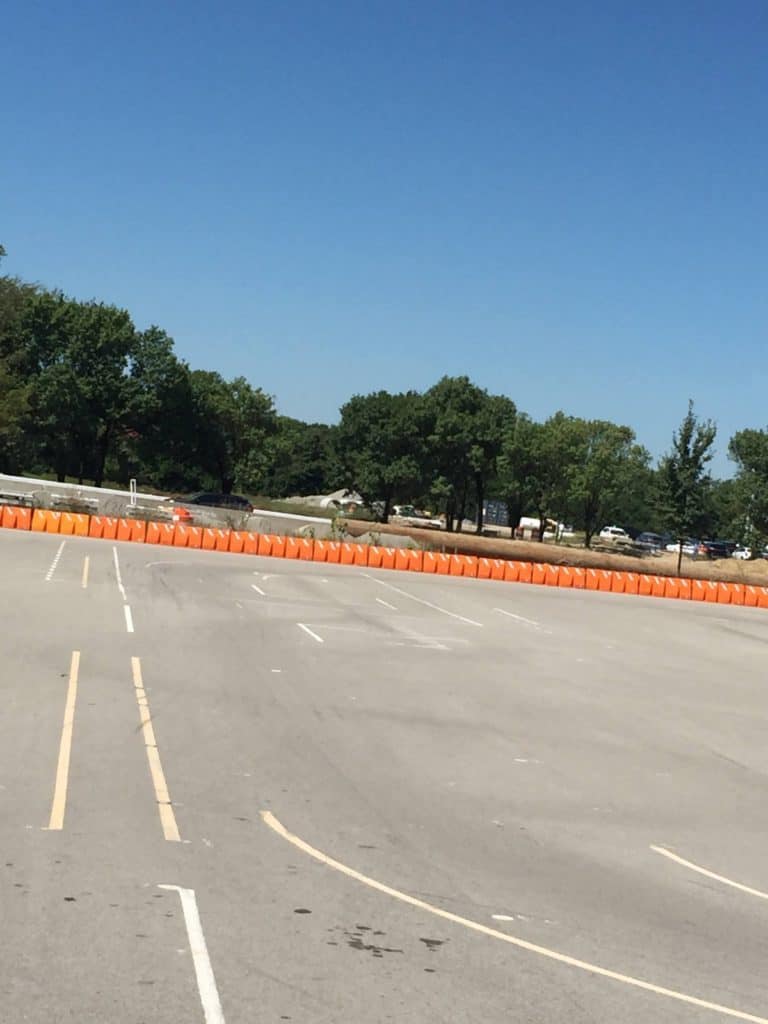At the age of 6, I wanted to balance and ride a motorcycle. While I was away on summer vacation, I learned to ride a bike and made dad teach me to ride a motorcycle. At first, I didn’t know if it was going to be hard.
Balancing a motorcycle above 10 mph is easier than below 5 mph. The gyroscopic forces created by the engine and moving wheels have a greater effect on keeping the motorcycle upright than at lower speeds. While similar to balancing on a bicycle the added weight of the motorcycle requires more effort at lower speeds.
As you can imagine, there is a fair amount of math we could explore. We might take a look at that another day. For now, let’s give you information that will increase your confidence to get on a motorcycle.

Do You Need Good Balance To Ride A Motorcycle?
As I noted before, my dad made me learn to ride a bicycle before he would teach me how to ride a motorcycle. There was a reason why.
You do not need a good sense of balance to ride a motorcycle, but you do need to know how to ride a bicycle. The sense of balance develops muscle memory for the heavier motorcycle. Developing balance skills does not take long when you practice regularly. Starting on a bicycle is the best place.
Most people feel that motorcycle riders have great balance. Just look at those guys and gals performing all those tricks.
Doesn’t that look intimidating? As a new rider, I could only imagine these trick doing two things: A. You get more excited about wanting to riding. B. You think this is crazy and you become a little more worried about the risks involved.
If you already know how to ride a bicycle, then your riding skills are already 2/3 of the way there. I say this from the strict sense of being able to balance the motorcycle and get it moving.
You do need some sense of balance to ride a motorcycle, but not a good sense. Toddlers create the sense of balance needed to ride motorcycles at a young age by riding balance bikes.
If you do not know how to ride a bicycle, then do NOT try riding a motorcycle. The heavyweight will put you at risk for an injury. Start with the light and easy-to-manage bicycle.
Do Motorcycles Balance Themselves?
You have likely seen a motorcycle on a video or riding with a buddy going without a person on it. Rather the person fell off the motorcycle.
It seems like the motorcycle balances itself.
Motorcycles balance themselves with the assistance of the centrifugal and gyroscopic forces behind operating a motorcycle. In a static position, the motorcycle will fall over on its own. The faster the motorcycle moves, the more balanced the motorcycle becomes. When balanced, the motorcycle will only travel straight.
The one exception I’ve seen to all of this was a prototype BMW. It was able to start, stop, and turn without the assistance of a rider. It was quite impressive.
In all fairness though, the additional components added to the bike perform the same functions as the rider. Thus leaving the balance forces to work as they would in a normal riding environment.

To better understand and see these forces, think of the time as a kid where you rolled the hula-hoop around the yard. The same forces that kept it rolling in the straight line are the same forces that help stabilize a motorcycle at speed.
How Do You balance Yourself On A Motorcycle?
To balance yourself on a motorcycle, start by learning how to ride a bicycle. Then work your way up to a small motorcycle. As you get better, move on to bigger models.
As a general rule, the easiest way to balance yourself on a motorcycle is by maintaining a speed above 5 mph. Anything below this speed makes the motorcycle top-heavy and likely to fall over. Additionally, position yourself to distribute weight equally on both sides of the machine.
One exercise that helps with balancing yourself on the motorcycle is trying to get it to stand on its own. Follow these directions.
- Position the motorcycle on a flat even surface.
- While standing next to the motorcycle, lift it off the kickstand while not running.
- Try to get the motorcycle to stand upright.
- Slowly loosen your grip and notice how the bike sits for a second or two and starts falling over.
- Repeat this process several times.
The point of the exercise is to show you how the bike reacts at slow speeds. I will reference the 5 mph again here. This is key to helping you obtain a balance on the motorcycle.
Another key to helping balance yourself on the bike is paying attention to your upper body positioning.
When you move your chest to the left or right of the machine it changes the weight distribution creating a force that can put you out of balance.
While this movement has little effect at higher speeds, below 5 mph it is enough to make you and the motorcycle fall over.
Remember when you ride at a slow speed (under 5 mph) to try and keep your torso as upright as possible. I cannot tell you the number of people that I have seen drop their bikes at the low velocities.
Why Does A Motorcycle Not Fall Over In Corner?
Now that we have reviewed why the motorcycle does not fall over while moving in a straight line, you are probably wondering about corners.
As I mentioned earlier, natural forces make a motorcycle want to stand upright. When you lean the motorcycle over, you are introducing a centrifugal force on the tire and machine.
Generally speaking, a motorcycle does not fall over in the corner when enough centrifugal forces are applied to the machine as it moves through the ark of the turn. Sticky tires, tighter turns, and higher speeds all create larger forces on the motorcycle allowing for an increased lean angle while not falling over.

Without getting in a high school physics lesson, know there are many aspects of the rider and motorcycle at play that keep the bike up.
You can see the effect of sticky tires when it rains at a bike race and riders fall in the direction they are leaning. The tires don’t stick as well reducing friction and they fall over.
Ice skaters illustrate the effect of speed and turns. As they extend and retract their arms they spin faster and slower. For our purpose, this means more or less affect on the motorcycle wanting to stand upright. The faster or tighter the turn, the further you can lean the bike over without it falling.
Understand all three of these inputs and you have the cornering gods in your back pocket.
